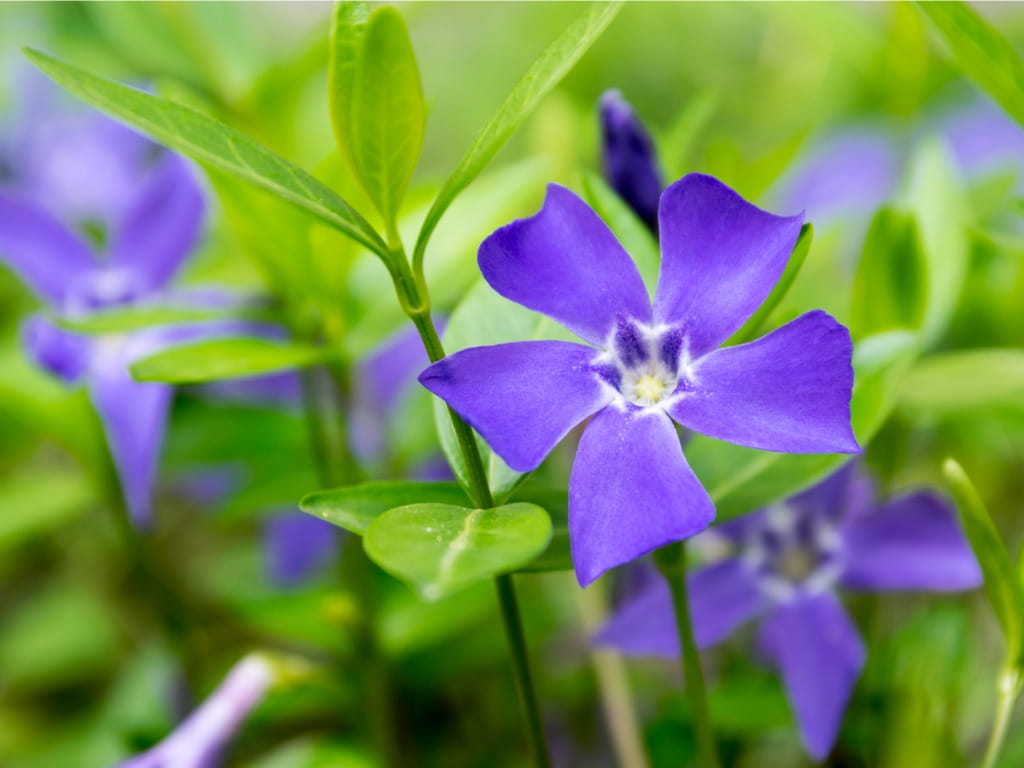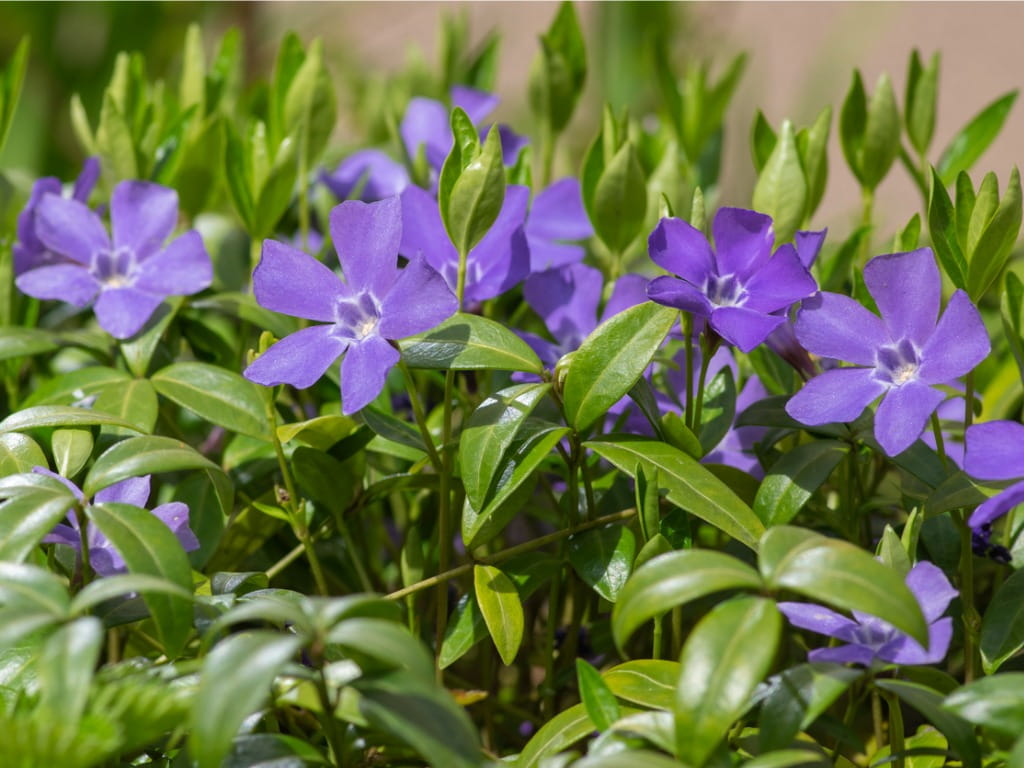Common Periwinkle (Vinca minor)

The Bottom Line
The common or lesser periwinkle (Vinca minor) has traditionally been used to treat several illnesses. It is always best to consult with your primary care provider and pharmacist before starting any herbal or supplement regimen to avoid any potential interactions with prescription or over-the-counter medications.

What is periwinkle (Vinca minor)?
The common or lesser periwinkle (Vinca minor) is a flowering plant native to Europe and northwestern Africa. It was introduced in the US as a medicinal herb and ornamental ground cover. It is a perennial evergreen that grows to about 6 inches in height with dark green leaves and small, blue-purple flowers with five petals.
What is the periwinkle plant used for?
Vinca minor has been used in folk medicine for conditions of the heart, nervous system, gastrointestinal system, and menstruation. It is commonly used to improve “brain health” and memory. Vinca minor contains multiple compounds called vinca alkaloids, which give the plant its medicinal properties. The alkaloid with the highest concentration found in Vinca minor leaves is vincamine, which has been used in patients with memory disturbances like Alzheimer’s disease and dementia. Vincamine has also been used to treat vertigo, headaches, and some heart conditions. It works by increasing oxygen use in the body and enhancing blood flow in the brain. It is commonly taken by mouth and may be called “periwinkle” or “vinca minor extract.” Be mindful that extracts are typically made with alcohol.
A more common and readily available supplement from Vinca minor is vinpocetine—an alkaloid that can be derived from vincamine. Studies have found that vinpocetine enhances memory and improves brain function. It has also been studied as a possible treatment for patients with Alzheimer’s disease, epilepsy, and stroke, but these studies have not found enough evidence to confirm any benefit. Generally, vinpocetine is well tolerated, but reported and potential side effects include headache, sleep problems, flushing, rashes, gastrointestinal problems, low blood pressure, and a drop in white blood cell count.
Can you overdose on Vinca minor?
There are no published reports of overdose with either Vinca minor or with its dietary supplement products. However, it is always best practice to consult with your primary care provider and pharmacist before starting supplements to avoid interactions with prescription and over-the-counter medications used. Vinpocetine can interact with blood-thinners and medications to treat high blood pressure. It is not recommended for use during pregnancy or breastfeeding.
What to do if someone has side effects from or takes too much periwinkle
If you suspect someone has unintentionally taken too much or is experiencing side effects from common or lesser periwinkle (Vinca minor), get an immediate personalized recommendation online or call 1-800-222-1222. Both options are free, confidential, and available 24 hours a day.
Diana Pei, PharmD
Certified Specialist in Poison Information
Poisoned?
Call 1-800-222-1222 or
Prevention Tips
- Have all your plants (indoor and outdoor) correctly identified by a knowledgeable expert.
- Keep all plants and herbal medications out of the reach of children and pets.
- Consult our helpful plant guide.
- Consult with your primary care provider and pharmacist before starting a periwinkle herbal regimen to avoid interactions with prescriptions and over-the-counter medications.
This Really Happened
A 2½-year-old girl ate one flower and two leaves of a periwinkle plant. She had no symptoms at the time of the call to Poison Control. Her parents were told to give her something to eat and drink and to monitor for any nausea and vomiting. Poison Control followed up the next day, and the child remained asymptomatic.For More Information
Periwinkle - uses, side effects, and more. New York: WebMD [cited 2 Sep 2022].
Vinocetine - uses, side effects, and more. New York: WebMD [cited 2 Sep 2022].
References
Common periwinkle. Victoria (BC): Invasive Species Council of BC; Mar 2017 [cited 2 Sep 2022].
Poisoned?
Call 1-800-222-1222 or
Prevention Tips
- Have all your plants (indoor and outdoor) correctly identified by a knowledgeable expert.
- Keep all plants and herbal medications out of the reach of children and pets.
- Consult our helpful plant guide.
- Consult with your primary care provider and pharmacist before starting a periwinkle herbal regimen to avoid interactions with prescriptions and over-the-counter medications.
